April 29, 2025
 At Mounds Park Academy, music is much more than an extracurricular activity. It plays a vital part in a child’s cognitive and emotional development by engaging the brain in ways few other disciplines can. It sharpens memory, strengthens attention, and boosts language skills. But beyond academic growth, music also nurtures empathy, creativity, and social and emotional intelligence through composing, performing, or simply listening. This is why music plays an essential role in Mounds Park Academy’s whole child, progressive, college-preparatory curriculum, PreK through grade 12.
At Mounds Park Academy, music is much more than an extracurricular activity. It plays a vital part in a child’s cognitive and emotional development by engaging the brain in ways few other disciplines can. It sharpens memory, strengthens attention, and boosts language skills. But beyond academic growth, music also nurtures empathy, creativity, and social and emotional intelligence through composing, performing, or simply listening. This is why music plays an essential role in Mounds Park Academy’s whole child, progressive, college-preparatory curriculum, PreK through grade 12.
In a time when standardized testing is heavily emphasized and there are rising concerns about math and science scores within our nation, parents might question MPA’s emphasis on arts education. From the school’s founding, our curriculum has reflected an intentional balance between academics and the arts. Through new and emerging research, we now know they were correct.
Cognitive Benefits of Music Education
The Frontiers in Neuroscience article, “How Musical Training Affects Cognitive Development,” states that children exposed to musical training have better verbal memory, language pronunciation and accuracy, reading ability, and executive functions, because of how the brain processes sound. Nina Kraus, author of “Of Sound Mind,” said “People think of the hearing brain as being a silo within the brain. In fact, our hearing engages our cognitive, sensory, motor, and reward systems.” Music learning is so powerful because it engages every one of the above systems into a single activity. Kraus asks us to consider playing the violin. “To play the violin, a student coordinates their motor, cognitive, and sensory system to be able to put their fingers on the correct strings and move the bow at the right time; to read musical notes on a sheet of music and know what sounds they represent; and to hear if the pitches and rhythms are correct and coordinating with other players at the same time,” she goes on to say that this elicits a certain feeling from the student playing the music, which triggers the reward system within the brain. Engaging these different systems makes learning music one of the richest and deepest brain activities humans can perform. Simply put, “Teachers resoundingly tell me that children who participate in creating music do better in school,” Kraus states. Read More

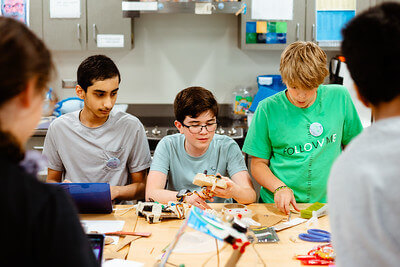 This message is from MPA’s Office of Admission from the August 11, 2025 issue of Inside MPA.
This message is from MPA’s Office of Admission from the August 11, 2025 issue of Inside MPA.  This message is from MPA’s Office of Admission from the July 9, 2025 issue of Inside MPA.
This message is from MPA’s Office of Admission from the July 9, 2025 issue of Inside MPA.  With the transition from school year to summer, families are presented with a unique chance to reimagine learning beyond the classroom. Summer has the potential for a joyful, enriching season where curiosity, creativity, and growth thrive together, whether it’s through imaginative play, new skills, outdoor exploration, or reflection. An intentional, balanced approach to summer can help children of all ages gain confidence, expand their skills and passions, and return to school feeling ready, refreshed, and inspired.
With the transition from school year to summer, families are presented with a unique chance to reimagine learning beyond the classroom. Summer has the potential for a joyful, enriching season where curiosity, creativity, and growth thrive together, whether it’s through imaginative play, new skills, outdoor exploration, or reflection. An intentional, balanced approach to summer can help children of all ages gain confidence, expand their skills and passions, and return to school feeling ready, refreshed, and inspired.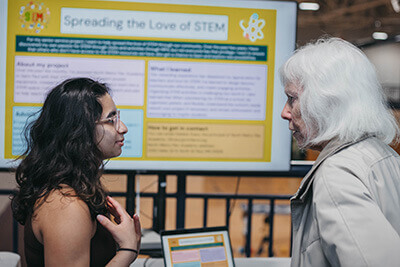 This message is from MPA’s Office of Admission from the May 22 issue of Inside MPA.
This message is from MPA’s Office of Admission from the May 22 issue of Inside MPA.  Approaching the end of their final year roaming the halls of MPA as students, we had the honor of interviewing many of the MPA Class of 2025 Lifers about their experiences at MPA, the only school they’ve attended for their entire academic careers.
Approaching the end of their final year roaming the halls of MPA as students, we had the honor of interviewing many of the MPA Class of 2025 Lifers about their experiences at MPA, the only school they’ve attended for their entire academic careers.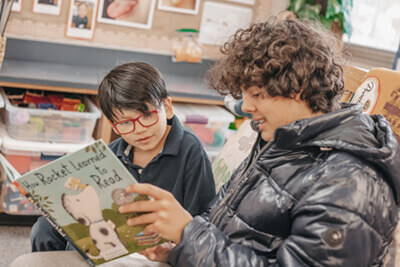 What is it about a PreK-12 learning environment that is uniquely powerful? Beyond just academics, this type of community fosters a sense of continuity, belonging, and deep-rooted connection that enriches the student experience. From the first day of school to graduation, students are surrounded by a familiar group of peers who nurture their growth and support their dreams. At MPA, this all-encompassing model creates a dynamic environment where meaningful relationships flourish, learning is intentionally built upon, and students are empowered to thrive.
What is it about a PreK-12 learning environment that is uniquely powerful? Beyond just academics, this type of community fosters a sense of continuity, belonging, and deep-rooted connection that enriches the student experience. From the first day of school to graduation, students are surrounded by a familiar group of peers who nurture their growth and support their dreams. At MPA, this all-encompassing model creates a dynamic environment where meaningful relationships flourish, learning is intentionally built upon, and students are empowered to thrive.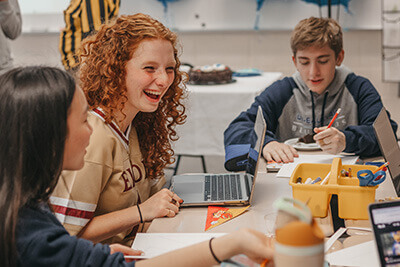 This message is from MPA’s Office of Admission from the May 8 issue of Inside MPA.
This message is from MPA’s Office of Admission from the May 8 issue of Inside MPA.  At Mounds Park Academy, music is much more than an extracurricular activity. It plays a vital part in a child’s cognitive and emotional development by engaging the brain in ways few other disciplines can. It sharpens memory, strengthens attention, and boosts language skills. But beyond academic growth, music also nurtures empathy, creativity, and social and emotional intelligence through composing, performing, or simply listening. This is why music plays an essential role in Mounds Park Academy’s whole child, progressive, college-preparatory curriculum, PreK through grade 12.
At Mounds Park Academy, music is much more than an extracurricular activity. It plays a vital part in a child’s cognitive and emotional development by engaging the brain in ways few other disciplines can. It sharpens memory, strengthens attention, and boosts language skills. But beyond academic growth, music also nurtures empathy, creativity, and social and emotional intelligence through composing, performing, or simply listening. This is why music plays an essential role in Mounds Park Academy’s whole child, progressive, college-preparatory curriculum, PreK through grade 12.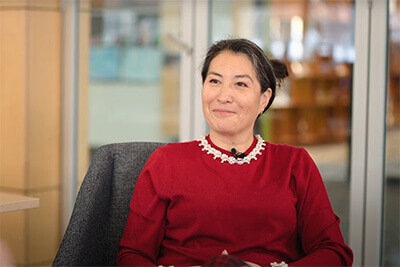 This message is from MPA’s Office of Admission from the April 22 issue of Inside MPA.
This message is from MPA’s Office of Admission from the April 22 issue of Inside MPA.